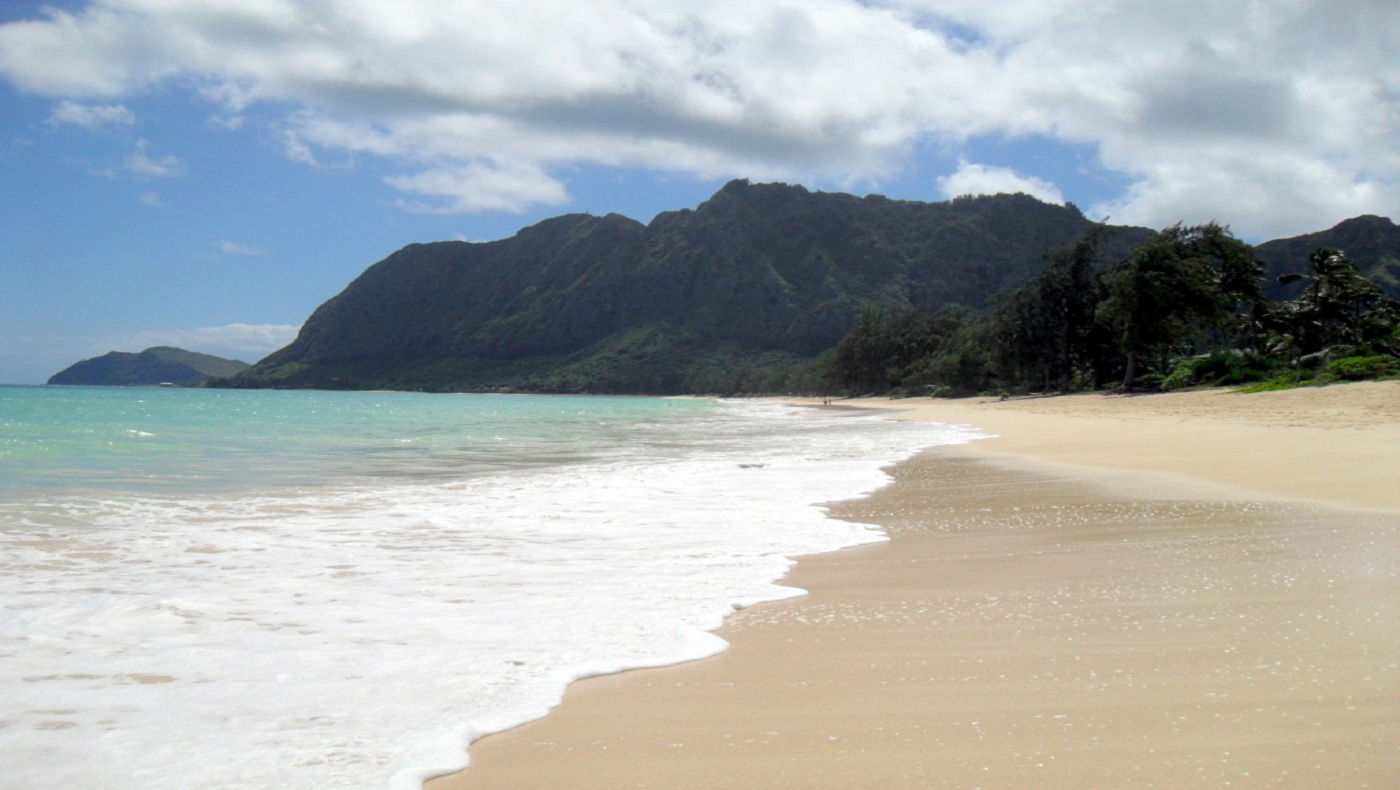 Panoramic view from the lookout at Punchbowl. The Waianae mountain range is visible in the distant far right of this image. Diamond Head crater is visible in the distant far left. Downtown Honolulu is directly below.
Panoramic view from the lookout at Punchbowl. The Waianae mountain range is visible in the distant far right of this image. Diamond Head crater is visible in the distant far left. Downtown Honolulu is directly below. The crater was formed some 75,000 to 100,000 years ago during the Honolulu period of secondary volcanic activity.
Although there are various translations of the Punchbowl's Hawaiian name, "Puowaina," the most common is "Hill of Sacrifice." This translation closely relates to the history of the crater. The first known use was as an altar where Hawaiians offered human sacrifices to pagan gods and killed violators of the many taboos.
During the late 1890s, a committee recommended that the Punchbowl become the site for a new cemetery to accommodate the growing population of Honolulu. The idea was rejected for fear of polluting the water supply and the emotional aversion to creating a city of the dead above a city of the living. Fifty years later, Congress authorized a small appropriation to establish a national cemetery in Honolulu with two provisions: that the location be acceptable to the War Department, and that the site would be donated rather than purchased. In 1943, the governor of Hawaii offered the Punchbowl for this purpose. The $50,000 appropriation proved insufficient, however, and the project was deferred until after World War II. By 1947, Congress and veteran organizations placed a great deal of pressure on the military to find a permanent burial site in Hawaii for the remains of thousands of World War II servicemen on the island of Guam awaiting permanent burial. Subsequently, the Army again began planning the Punchbowl cemetery.
February 1948 Congress approved funding and construction began.
The cemetery opened to the public on July 19, 1949, with services for five war dead: an unknown serviceman, two Marines, an Army lieutenant and one civilian—noted war correspondent Ernie Pyle. Initially, the graves at National Memorial Cemetery of the Pacific were marked with white wooden crosses and Stars of David.
Despite the Army’s extensive efforts to inform the public that the star- and cross-shaped grave markers were only temporary, an outcry arose in 1951 when permanent flat granite markers replaced them.






 RSS Feed
RSS Feed